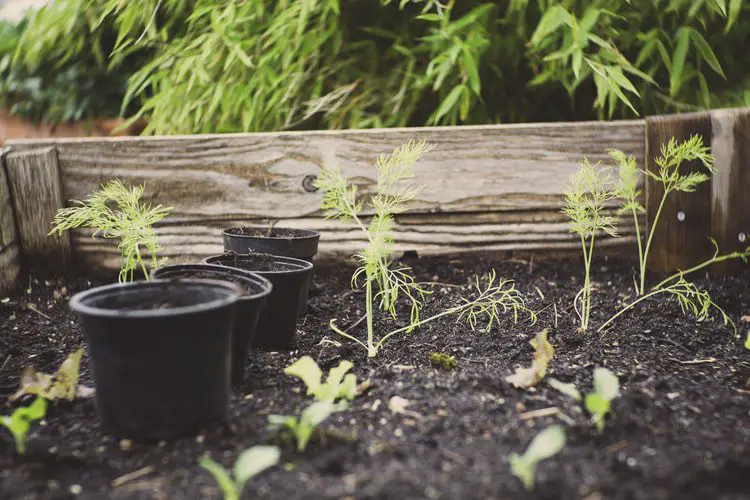The process of growing plants elevated above the surface is known as raised bed gardening. The raised beds can be created using many different types of materials and can be planted with many different plants. Keeping a raised garden bed has lots of advantages and we will tell you all about the advantages as well as the best plants for raised garden beds.
Raised garden beds make it easy to start a garden in an afternoon without all of the headaches of tilling soil and removing plant roots. It’s easy to get deep fertile soil without a bunch of backbreaking work.
With raised beds, you can plant lots of fruits, flowers, and vegetables. However, some plants are more fitted to this type of growth environment than others. And there are some things to keep in mind when planting in raised garden beds.
Table of Contents
What is a Raised Bed?
Gardeners have been creating raised beds for many years. A raised bed is quite simply any sort of planting bed that is raised above the existing ground level. These beds can be as low as several inches above the ground or as high as several feet. They can be built right on the ground or they can be built more like an elevated planter box table.
One of the distinct advantages to creating a raised bed is that you can fill the bed with the type of topsoil that you want in your bed. You aren’t stuck with the ground that is below or the weed roots that are in that ground. Many gardeners will fill their raised garden beds with a mix of black organic topsoil and organic compost.
These beds need to be built to hold the planting soil, but which materials you choose to use to build your raised beds is entirely up to you. Here are some of the materials that can be used to create raised beds.
- Lumber
- Timbers
- Rock
- Concrete
- Bricks
- Blocks
Some Examples of Raised Beds
Use your imagination when building your raised garden bed. Here are a few examples to get you started.
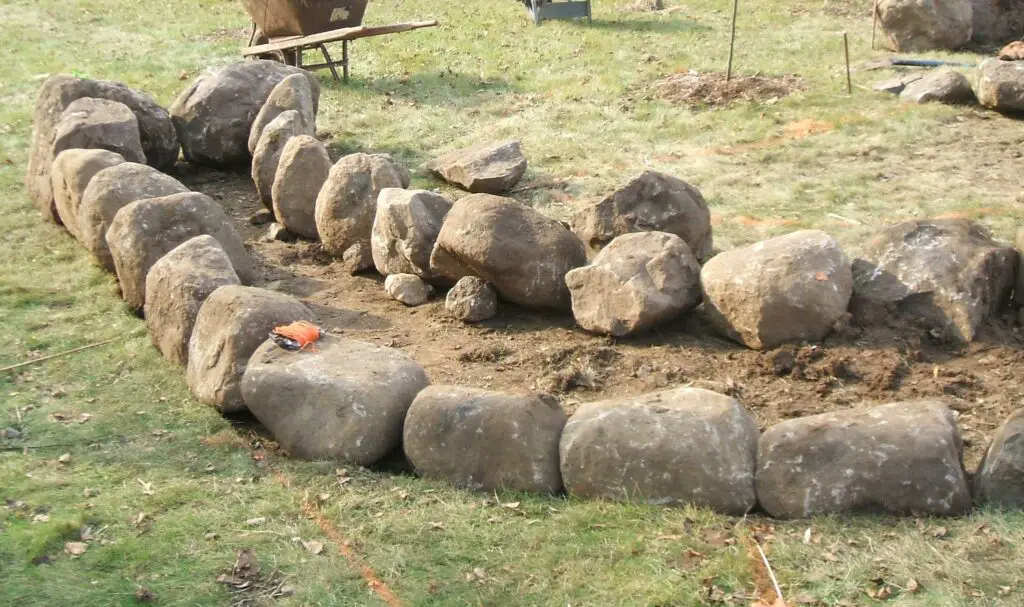

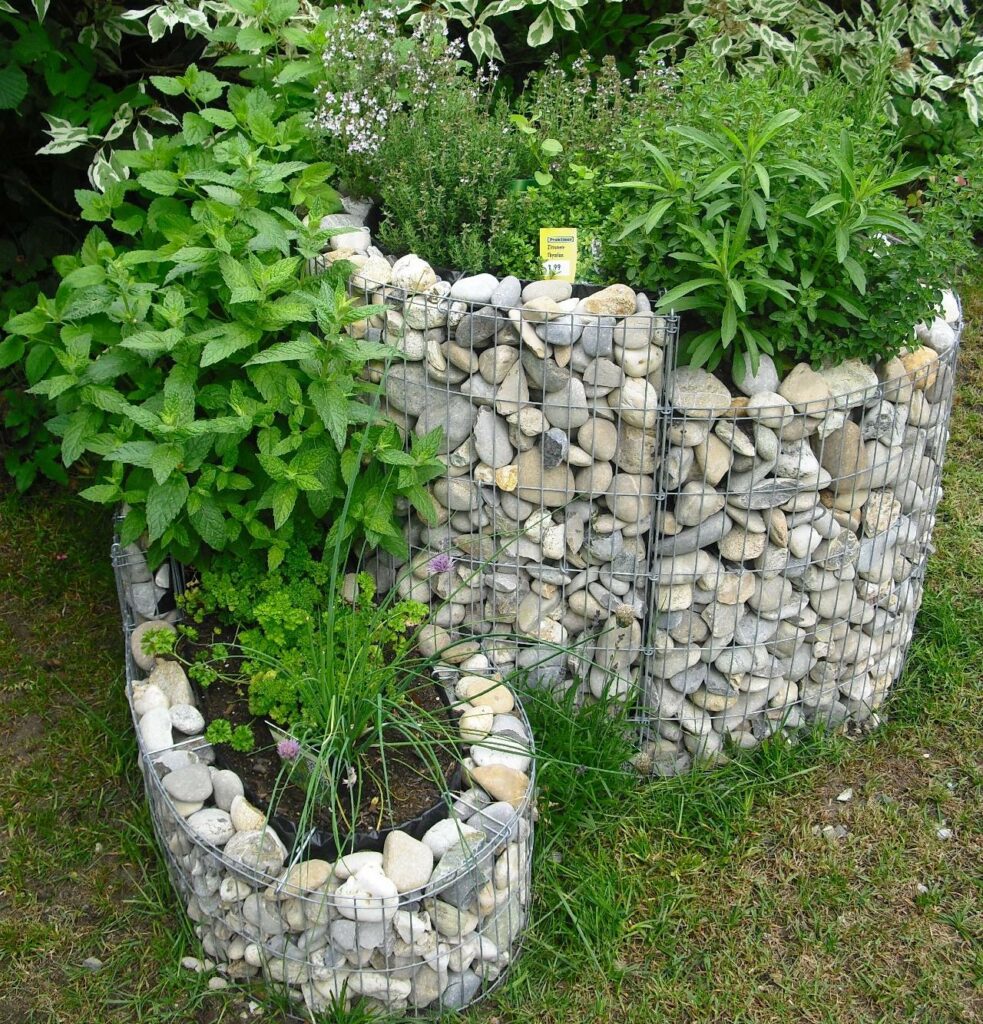
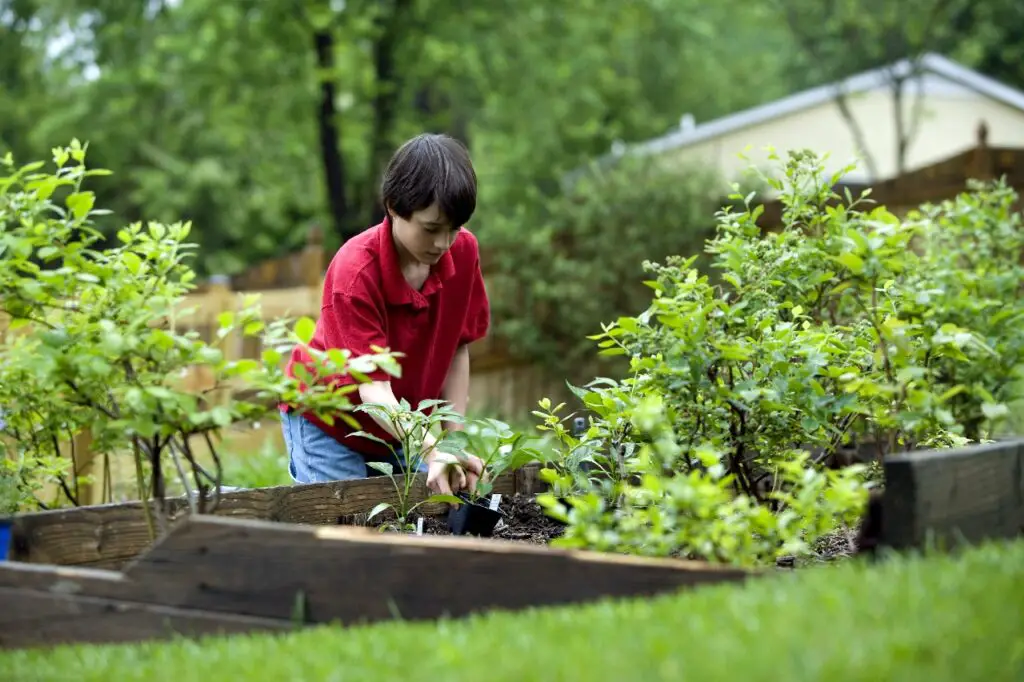

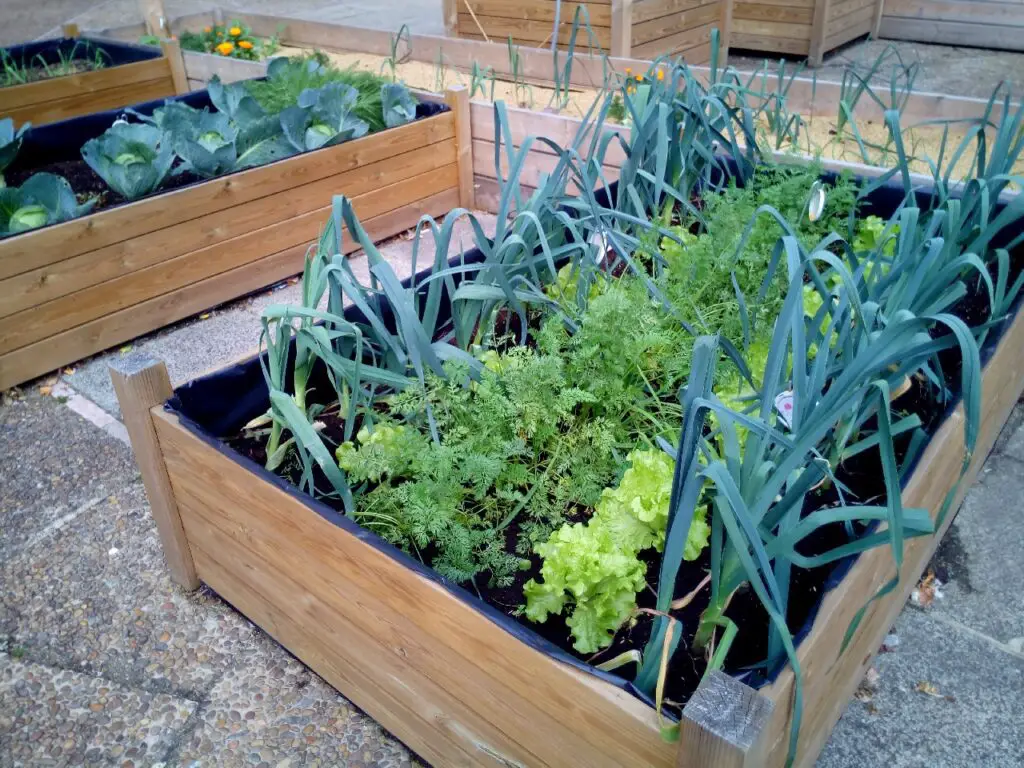
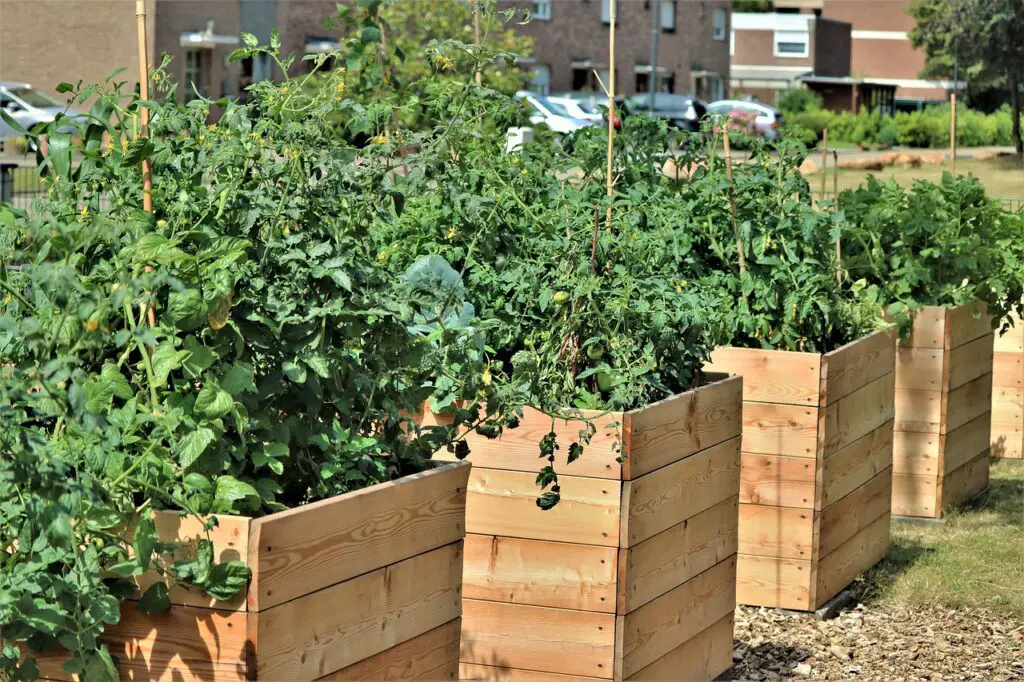
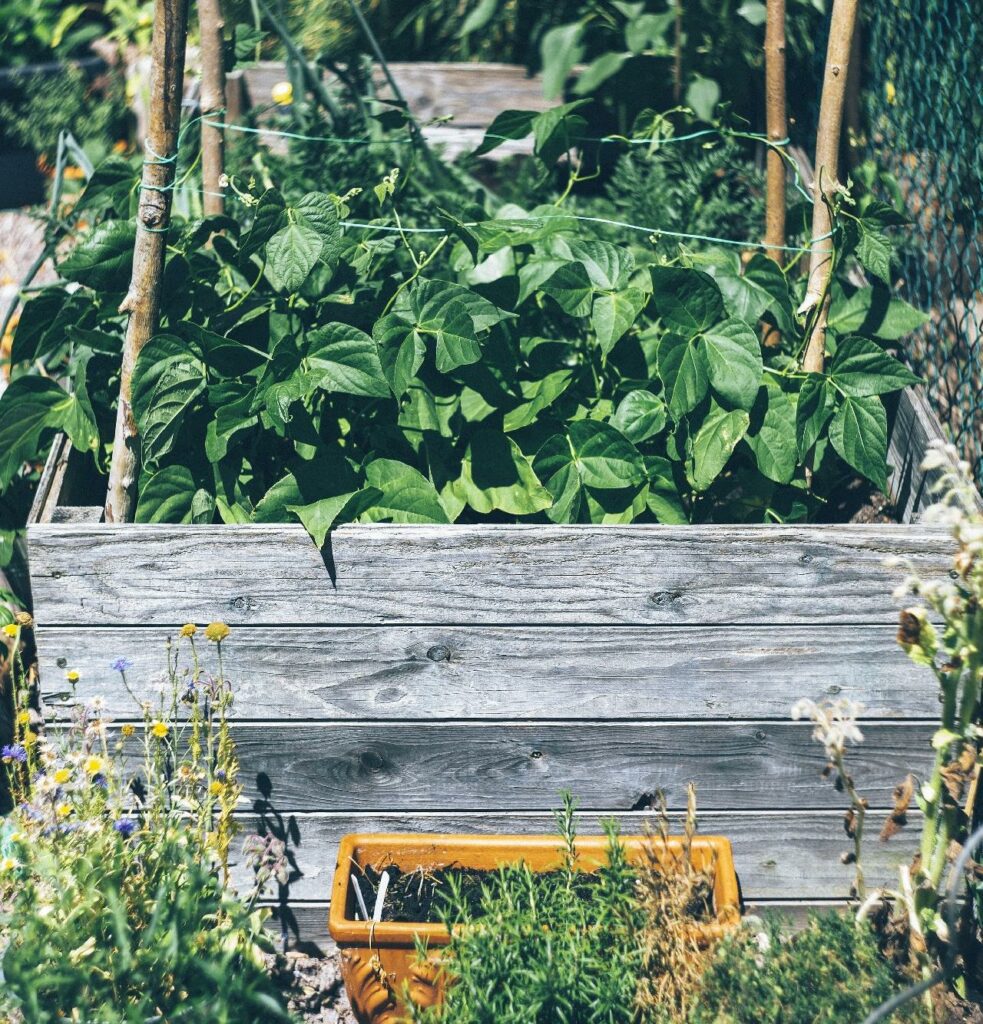
Water
Ideally, you would create separate raised beds or at least separate areas within the beds for plants that require the same volume of water to thrive. For instance, when a moisture-loving tomato shares a raised bed with a plant that likes dry soil, one of them won’t be healthy, it would be better to have two plants that require the same amount of water.
Cardinal flowers, monkshood, and sedge are all “thirsty” plants that thrive in elevated garden beds. Consider Russian sage, prairie plants (false indigo, coreopsis, great bluestem), succulents (echeveria, sedum, hens-and-chicks), or Mediterranean herbs (lavender, rosemary, thyme) in drier areas.
It’s always nice to look at the seed packet or plant tag, which should inform you of your plant’s water requirements. Remember that any raised bed is going to require more watering than a bed that is down in the ground, simply because it will dry out more quickly.
Sunlight
How much sunlight reaches your raised garden bed per day significantly impacts the types of plants you can cultivate. And rightfully so because photosynthesis, the food-making process in leaves, requires light.
Most vegetables (such as squash, peppers, leafy greens), several herbs (such as rosemary, basil, lavender), and fruits (tomatoes, strawberries, and melons) require a lot of sun exposure (at least six hours a day).
Beautiful ornamental plants, including ferns, hostas, caladiums, impatiens, and caladiums, thrive in shady locations. Sunlight requirements can be found on the plant tag or seed packaging.
Rich Soil
Think of the time you could spend beautifying your garden instead of stressing about what you can and can’t grow and working to amend your existing soil and remove all of the weed roots. If you fill your raised bed with high-quality soil, you don’t need to worry about tilling, weeds and soil amendments, you can start planting right away. Your plants will have all of the nutrients they need to stay healthy and yield good flowers and fruit.
You can grow everything! Strawberries, tomatoes, eggplants, and all sorts of flowers will do well in your new raised gardens full of nutrient rich soil! Lavender, daylilies, oregano, hostas, raspberries, and rhubarb are great perennials that thrive in raised garden beds. Although, keep in mind that if you plant these perennial plants in your bed, they’ll be there for a long time (until you decide to pluck them out).
In contrast, annual plants are only there for a short time. They only survive one growing season so that you may plant something else in the same spot the next season. Basil, pansies, petunias, lemongrass, and veggies like potatoes, tomatoes, potatoes, peppers, squash, and onions are some annuals you might like to cultivate in your raised bed garden.
Spacing and Depth
How deep will you make your raised bed? It’s safe to say that most plants like to be in at least one foot of soil, but if your raised bed is on the ground, they can always grow into the soil beneath also.
If you have an existing bed or are using hard, native soils, you should till the soil at least 8-10 inches deep. Deep tilling loosens the soil, allowing vegetable roots to penetrate deeper.
However, some plants, like lettuce, rhizomal plants, vines, sweet alyssum, marigold, and pansies, can do well in less soil (six inches deep) due to their shallow root systems. Plants sown in shallow soil can’t develop deep roots, and they will dry out more rapidly without sub-soil hydration. Keep plants in shallow soil well-watered.
The finest harvests of most vegetables, such as peppers, tomatoes, and eggplants, come from soil at least 20 inches deep. Because these beds are isolated from surrounding soils, it is important that you amend your soil yearly to keep it rich and fertile. Fertilize the beds more often and nurture them like a potted garden.
Benefits of Growing Plants in an Elevated Garden Bed
Planting in raised garden beds is the quickest and easiest way to a variety of crops in less than a year! These are the reasons why.
- You can plant more food in a limited amount of space – Plants can be spaced near each other so that no square inch is wasted. Methods for small-space gardening, like vertical supports and succession planting can guarantee that every square inch of available space is put to good use.
- There are hardly any weeds – We can start weed free if we bring in organic topsoil and the weeds have limited room to grow in raised beds since they are thickly planted. When they find a place to call home, they’re easy to remove from the loose, fertile soil.
- Good quality soil – Healthy soil is essential for a successful food garden. Even if the soil in your area is poor, you may start over with the right soil blend in a raised bed. Plus, you can easily adjust the soil according to the plant’s needs. If you’re planning to cultivate blue hydrangeas, for example, you can add a soil acidifier to the soil.
- Planting can begin as soon as possible – In comparison to in-ground beds, excess water drains more efficiently in raised garden beds, and the soil warms up sooner in the spring. You can also take advantage of covers and garden cloth if you want to get started even sooner.
- Controlling pests is a way simpler – Compared to wide planting fields, smaller raised garden beds make it easier to handle insects and keep animal pests out. Row fabrics or specialty covers can simply be used to cover beds.
- Raised beds are easier to tend – Because they can be raised out of the ground at any height we want, a raised bed won’t require as much kneeling and bending over to plant and tend. And, because we can create them any size that we want, all of our plants can be an arms reach away, making planting, weeding and harvesting very easy.
Fruits and Vegetables for Raised Garden Bed
The following are vegetables and fruits that will grow well on a raised garden bed.
Eggplant (Solanum melongena) and Peppers (Capsicum)
Rightfully so, eggplant and colorful peppers spring to mind when we think about growing on a raised garden bed.
These plants thrive well in the warm soils of raised beds and are nutrient-hungry. Raised beds make it easier for gardeners to meet the nutritional and watering needs of these prolific growers.
Peppers thrive in the sun and heat and can be grown alongside tomato plants if desired. They are simple to cultivate and require minimal upkeep. Peppers, especially chili peppers, can be difficult to develop from seed. If you buy starting plants from a nursery, though, you may place them in your raised bed once the threat of frost has gone.
Tomatoes (Solanum Lycopersicum)
Did you know that tomato seedlings have been planted in space?
Tomato plants flourish when their roots are stretched deep into loose soil, ready to feed. They thrive in full sunlight and make excellent complements to raised garden beds.
Plant growth conditions influence tomato fruit quality and metabolite biosynthesis. Drought and salinity are the most significant problems that gardeners face when trying to plant good tomatoes.
So if you want a higher crop yield, ensure that your tomato plants never get thirsty (or salty)!
Plant tomatoes towards the back of a raised garden bed since they may grow fairly tall. To add support, use tomato cages.
Onions (Allium cepa)
Onions are a fine addition for cramming a few more veggies into your raised beds. You’ll want to keep them away from your peas and beans, though.
Onions are a resilient, cold-season vegetable that thrives in temperatures ranging from 55–75 degrees Fahrenheit. They thrive in places with chilly spring weather and drier, warmer summers.
As for the soil requirements: they need rich, well-draining soil with a pH of 5.5–6.5 (such as silt loams or clay). Acidic soils are unsuitable for these plants. For the best bulb growth, you should plant onions where there is full sun.
Buying onion sets and planting the small bulbs in early spring is the easiest way to cultivate onions.
To give onions a head start on the growing season, plant them from seed indoors eight to ten weeks prior to the last frost.
Plus, onions may act as a natural pest repellent for various crops, so pack them in among your tomatoes, broccoli, kale, cabbage, peppers, and lettuce! You can put a few extra onions in the gaps between your larger plants because onions don’t take up much room.
Mixed Greens (Lettuce, Spinach, etc.)
The warmer, well-draining soil of raised beds is ideal for spinach, lettuce plants, and mixed salad greens. You’ll like that you can make your growth season longer by planting them early and in succession through the season with adequate protection.
Why do we recommend planting these different salad greens together instead of just sticking to one? They’re not standalone vegetables. It’s a good idea to have a crop of salad greens in your raised bed! They have a short growing period, after all.
Carrots (Daucus carota)
Carrots are excellent choices for growing in raised beds. Carrots may thrive unhindered by rocky terrain in raised beds, which provide loose, well-draining soil.
They may be readily tucked in under the protection of taller plants since they grow fruit beneath the earth and have a low habit.
Varied types have different requirements, but on a square foot of area, you can plant around 18 carrots.
Carrot seeds are quite small and only need to be sown 1/4 inches deep. Water the carrots lightly, being careful not to wash away the small seeds.
Plant double the number of seeds as you anticipate growth in your place. It would help if you thinned the carrots as they develop to ensure that they have enough area to grow. Carrots may be planted in succession throughout the season for a continual yield.
Peas (Pisum sativum)
Gregor Mendel, renowned as the “Father of Modern Genetics,” studied pea plant diversity. So you know that peas are pretty important in the realm of science. Think about that when you want to grow peas in your raised garden bed!
Plus, peas make you think of spring, and there is never too much. Sugar snap peas, snow peas (Chinese pea pods), and shell peas are three varieties of peas that are all easy to produce.
Here’s what you need to do: sow pea seeds at the beginning of spring, around four to six weeks before the last predicted frost. Do this as soon as you can work the soil.
When you sow the seeds, plant them one to two inches apart—space double rows six inches from each other.
If you’re growing a staked variety, you should install a pea trellis or hang netting before planting.
Peas may be grown in pots and planters as well. Choose extremely dwarf cultivars like Patio Pride or Tom Thumb, for they only reach a height of six inches.
Celery (Apium graveolens)
Celery is eager to take up residence in a raised bed because they have a shallow root system. It’s a fussy plant that needs a lot of water, nutrient-rich soil, cold weather, and a long growing season to thrive. Muck soil is suitable because of its great moisture-holding ability.
Root nematodes and aphids can also be kept under control using raised beds.
You may grow them from starter plants, seeds, or even the heart of a cluster of celery you bought at the store.
Because celery likes colder temperatures, start your seeds within eight to ten weeks before the last frost date.
Legumes (Fabaceae)
Legumes incorporate nitrogen back into the soil. Thus they serve a dual purpose in the raised garden bed.
They increase the soil’s nutritional level while generating abundant crops. They are available in both freestanding and climbing types, which may be grown in raised beds.
Some great legumes to plant in raised garden beds are bush and pole bean varieties, peas, lentils, and chickpeas.
Bush beans (Phaseolus vulgaris)
You can’t go wrong with bush beans; they take less than two months from seed to maturity and provide weeks of delicate pods.
Don’t hurry for spring planting since beans need warm, well-draining soil and warm temperatures. Plant the bush bean seeds a couple of inches apart in rows spread 18 inches apart after the last frost. Thin bush beans to six inches if they’ve established a good root system.
Planting various purple, green, yellow, and red beans is one interesting way to make a rainbow.
For instance, Mascotte is an All-America Selections winner which produces a large crop of thin green beans kept high above the leaves, making harvesting simple.
The heritage bush bean, Dragon Tongue, may be used as a snap bean or a freshly shelled bean. The buttery yellow flat pods with purple lines are truly spectacular!
Squash and Zucchini (Cucurbita pepo)
Raised beds are ideal for planting large crops like zucchini and squash.
Bush variants have a more open habit and are ideal for raised beds. Allowing vining plants to spill out over the sides of raised beds or adding trellises for them to climb on are additional options.
Squashes are available in a variety of colors and forms, including brown, orange, and blue. Squashes come in all forms, all of which belong to the Cucurbita genus (Family Cucurbitaceae).
Fruits of several species have been given the names winter squash, pumpkin, and summer squash. Speaking of summer squash, zucchini is one! Zucchini is a seasonal vegetable with great nutritional and medicinal value.
Zucchini, as we know it in the United States, is an Italian term. In certain areas of Europe, these vegetables are referred to as “courgettes,” whereas in the United Kingdom, they are referred to as “vegetable marrow.” “Long marrow” and “garden marrow” are two other names for this vegetable.
Summer squashes like zucchini have soft, edible skin, and they grow quickly, taking 35 to 55 days to harvest.
Strawberries (Fragaria × ananassa)
Strawberries, unlike blueberries and grapes, are not real berries. Berries are required to have seeds on the inside, according to science. Strawberry is a “false fruit.”
Strawberry plants thrive in sunny areas where the soil is warm. Raised beds provide these ideal circumstances while protecting strawberry plants from pesky slugs that prey on luscious strawberries.
Brassicas
Brassica is a plant genus belonging to the family Brassicaceae, the same family as mustard and cabbage. Crops of this genus are frequently referred to as cole crops, which comes from the Latin caulis, a plant’s stem or stalk.
In a raised bed setting, brassicas provide excellent first-round early harvests. They are prone to bolting in hot weather and thrive in the controlled soil temperatures in raised beds. The soil’s warmth is maintained, prolonging the growing season for both early and late-season crops.
They may also grow readily protected in raised beds, allowing for an autumn and winter harvest.
Examples of brassicas are cauliflower, cabbage, broccoli, arugula, Brussels sprouts, and kale.
Radishes (Raphanus sativus) and Beets (Beta vulgaris)
To you, radishes might be just another vegetable. But did you know that radish plants are being researched for future crop growth in space? That’s because they’re so easy to grow!
Beets and radishes are wonderful root vegetables that grow well in the soft soil of raised beds, especially when they aren’t competing with weeds or hampered by rocky soil. They’re great for succession planting because of their fast maturity times.
Cucumbers (Cucumis sativus)
The cucumber is a delicate annual with a trailing stem that is rough and juicy. The fuzzy leaves contain three to five pointy lobes, and the stem is covered with branching tendrils that can be used to hold the plant.
Cucumbers grow well on raised beds. Let them flow over the edges of raised beds or up trellises to optimize the area for these prolific fruiting plants.
If you’re planning to make pickles, pick cucumbers when they are still immature.
Garlic (Allium sativum)
Garlic is a vegetable that’s unbelievably easy to grow. About a dozen cloves are encased in a thin white skin on each garlic bulb. In mid-autumn, insert separate cloves into the soil. Then, expect a good harvest in the early to mid-summer the next year!
What’s nice about garlic is its resistance to disease and pests. They thrive in normal garden soil, too, so you have one less thing to worry about. But don’t plant garlic from the store since it may have been sprayed. Instead, go to your local garden center or farmer’s market and purchase garlic for planting.
Mulch the raised beds with straw after planting to keep the soil wet and weeds at bay.
Melons (Cucumis melo var. cantalupensis)
Raised beds are also ideal for large fruiting plants like melons. Melons have a wide range of beneficial characteristics in addition to their amazing scent and sweetness. One of the most significant is their capacity to produce endorphins, making them an effective treatment for depression and spleen problems. The plant’s nutritional components have a strong toning effect, and vitamin C strengthens the immune system.
The best growth environment for delicious melons of all types is warm, pH-balanced, nutrient-rich soil that offers enough drainage. To save space, allow vining plants to flow over the sides of raised beds or teach them to climb trellises or other climbing structures.
Potatoes (Solanum tuberosum)
In a raised garden bed, potatoes can grow pretty well. Growing tubers in well-draining soil minimize rot, and the loose soil enables tubers to develop fully without being hampered by thick dirt or rocks.
A primary branch emerges from a seed potato after you plant it. Rhizomes are underground stems that sprout from the main stem and generate tubers at their terminals.
This indicates that potatoes grow over the seed potato’s initial planting location. When more dirt is piled around the plant’s main stem, more tubers will grow as new rhizomes sprout below the soil level.
Swiss Chard (Beta vulgaris ssp. cicla) and Kale (Brassica oleracea var. sabellica)
In raised beds, kale and Swiss Chard are excellent late-season vegetables. They prevent soil compaction, and they may be sheltered with hoop houses or cold frames to prolong their growing season and even provide an autumn and winter crop.
Swiss chard seed is used for the establishment, and it grows in bunches, needing quick thinning. You can consume the thinnings as greens, then pick the leaves and stems after 50–60 days, retaining crowns that produce additional leaves for later harvest.
Meanwhile, kale will flourish in colder temperatures. Sow kale seeds in July or buy seedlings in August for an autumn crop. Many garden centers provide mature plants with beautiful foliage in late August and September.
Herbs and Flowers for Raised Garden Beds
When identifying what to grow on a raised garden bed, we emphasized mostly fruits and vegetables, but herbs and flowers grow very well in raised beds too!
Some flowers and herbs make excellent garden companion plants, attracting helpful pollinators, concealing the fragrance of cherished foods, and shielding them from outdoor pests. They have the potential to be extremely lovely.
- Thyme is a fragrant herb that scares away parasitic worms that attack strawberry plants.
- Basil can help tomatoes taste better by repelling mosquitos and flies.
- Lavender, when planted near fruits, encourages helpful pollinators.
- Mint is a great flea beetle and cabbage moth deterrent.
- Marigolds, nasturtium, sunflower, and zinnias are all good insect repellents.
- Cosmos lure in beneficial insects that eat problem insects that devour vegetables.
- Dill should be kept away from carrots and cabbage. And cucumbers don’t go well with aromatic herbs.
- Carrots and chives get along smoothly since chives repel carrot flies.
- Borage repels pests while simultaneously attracting pollinators and beneficial insects.
- Caraway draws in insects that feed on bugs that can harm strawberries significantly. Parasitic flies and wasps are among the insects that will defend strawberries against fruit-eating pests like mites and aphids.
REFERENCES
https://extension.unh.edu/resource/growing-vegetables-tomatoes-fact-sheet-1
https://extension.oregonstate.edu/news/some-vegetables-require-less-water-others
https://www.fs.usda.gov/detail/boise/learning/nature-science/?cid=fsed_009729
https://plantscience.psu.edu/outreach/plant-id/grasses
https://plants.ces.ncsu.edu/plants/salvia-yangii/
https://aces.illinois.edu/news/drama-blue-false-indigo
www.plantsoftheworldonline.org/taxon/urn:lsid:ipni.org:names:60437222-2
https://www.wildflower.org/plants/result.php?id_plant=ange
https://www.ncbi.nlm.nih.gov/pmc/articles/PMC5234533/
https://books.google.com.ph/books?id=26wscf9vm38C&redir_esc=y
https://www.extension.iastate.edu/news/2005/jun/351403.htm
https://newcropsorganics.ces.ncsu.edu/herb/lavender-history-taxonomy-and-production/
https://jbiomedsci.biomedcentral.com/articles/10.1186/s12929-019-0499-8
https://plants.ces.ncsu.edu/plants/thymus-vulgaris/
https://news.mit.edu/2018/mit-energy-initiative-better-understanding-how-plants-use-sunlight-1204
https://ssec.si.edu/stemvisions-blog/what-photosynthesis
https://extension.psu.edu/soil-quality-information
https://www.jstor.org/stable/20794319
https://www.wnc.edu/files/departments/ce/sci/attralavender.pdf
https://www.rhs.org.uk/advice/grow-your-own/herbs/oregano
https://extension.uga.edu/publications/detail.html?number=C955&title=Growing%20Hostas
https://ohioline.osu.edu/factsheet/hyg-1421
https://www.extension.iastate.edu/sites/www.extension.iastate.edu/files/iowa/Rhubarb1.pdf
dx.doi.org/10.1007/s001220051581
https://ipm.missouri.edu/MEG/2010/4/The-Marvelous-Marigold/
www.doiserbia.nb.rs/img/doi/0352-4906/2019/0352-49061937057P.pdf
https://nph.onlinelibrary.wiley.com/doi/10.1111/j.1469-8137.2007.02370.x
https://extension.umn.edu/yard-and-garden-news/succession-planting
https://www.sciencedirect.com/book/9780128166918/plant-factory
https://doi.org/10.1016/B978-0-12-437651-9.50007-5
https://www.canr.msu.edu/news/tomatoes_and_the_science_behind_them
https://doi.org/10.3389/fpls.2018.00279
https://pubmed.ncbi.nlm.nih.gov/12221975/
https://plantvillage.psu.edu/topics/onion/infos
https://extension.uga.edu/publications/detail.html?number=B1198&title=Onion%20Production%20Guide
https://www.health.harvard.edu/staying-healthy/salad-greens-getting-the-most-bang-for-the-bite
https://www.cdc.gov/parasites/cyclosporiasis/resources/pdf/Cyclosporiasis_FactSheet_Peas.pdf
https://horticulture.oregonstate.edu/oregon-vegetables/celery-2
https://aces.nmsu.edu/pubs/_a/A129/
https://www.loc.gov/everyday-mysteries/item/how-did-squash-get-its-name/
https://www.sciencedirect.com/book/9780123743800/plant-systematics
https://www.ncbi.nlm.nih.gov/pmc/articles/PMC5537869/
https://cals.arizona.edu/maricopa/garden/html/pubs/0403/zucchini.html
https://www.canr.msu.edu/news/strawberries_and_the_science_behind_them
https://carnegiemuseums.org/magazine-archive/1997/mayjun/dept4.htm
https://extension.umn.edu/fruit/growing-strawberries-home-garden
https://content.ces.ncsu.edu/slugs-in-strawberries
https://doi.org/10.1016/B978-0-12-818553-7.00020-6
https://www.nasa.gov/missions/science/radishes.html
https://ipm.missouri.edu/meg/2014/3/Cucumber-A-Brief-History/
https://www.britannica.com/plant/cucumber
https://www.sciencedirect.com/referencework/9780123849533/encyclopedia-of-food-and-health
https://extension.uga.edu/publications/detail.html?number=C854&title=Garlic
https://www.ncbi.nlm.nih.gov/pmc/articles/PMC5468350/
www.jcreview.com/fulltext/197-1582529746.pdf
https://extension.unh.edu/blog/2020/03/what-best-way-grow-potatoes-containers
https://www.ncbi.nlm.nih.gov/books/NBK92775/
https://pss.uvm.edu/ppp/articles/kale.html
https://www.intechopen.com/chapters/42925
https://www.fs.fed.us/wildflowers/pollinators/importance.shtml
https://www.scirp.org/journal/paperinformation.aspx?paperid=107549
https://www.academia.edu/19604955/Sweet_basil_and_Lemon_balm_as_a_mosquito_repellant
https://extension.oregonstate.edu/gardening/pollinators/bumblebees-lavender
https://web.uri.edu/mastergardener/files/P1-Companion-Planting-Ecogardening.pdf
https://journals.plos.org/plosone/article?id=10.1371/journal.pone.0213071
https://extension.psu.edu/attracting-beneficial-insects
https://uiearchive.web.illinois.edu/cook/downloads/69320.pdf
https://onlinelibrary.wiley.com/doi/full/10.1111/een.12880
https://content.ces.ncsu.edu/extension-gardener-handbook/4-insects

